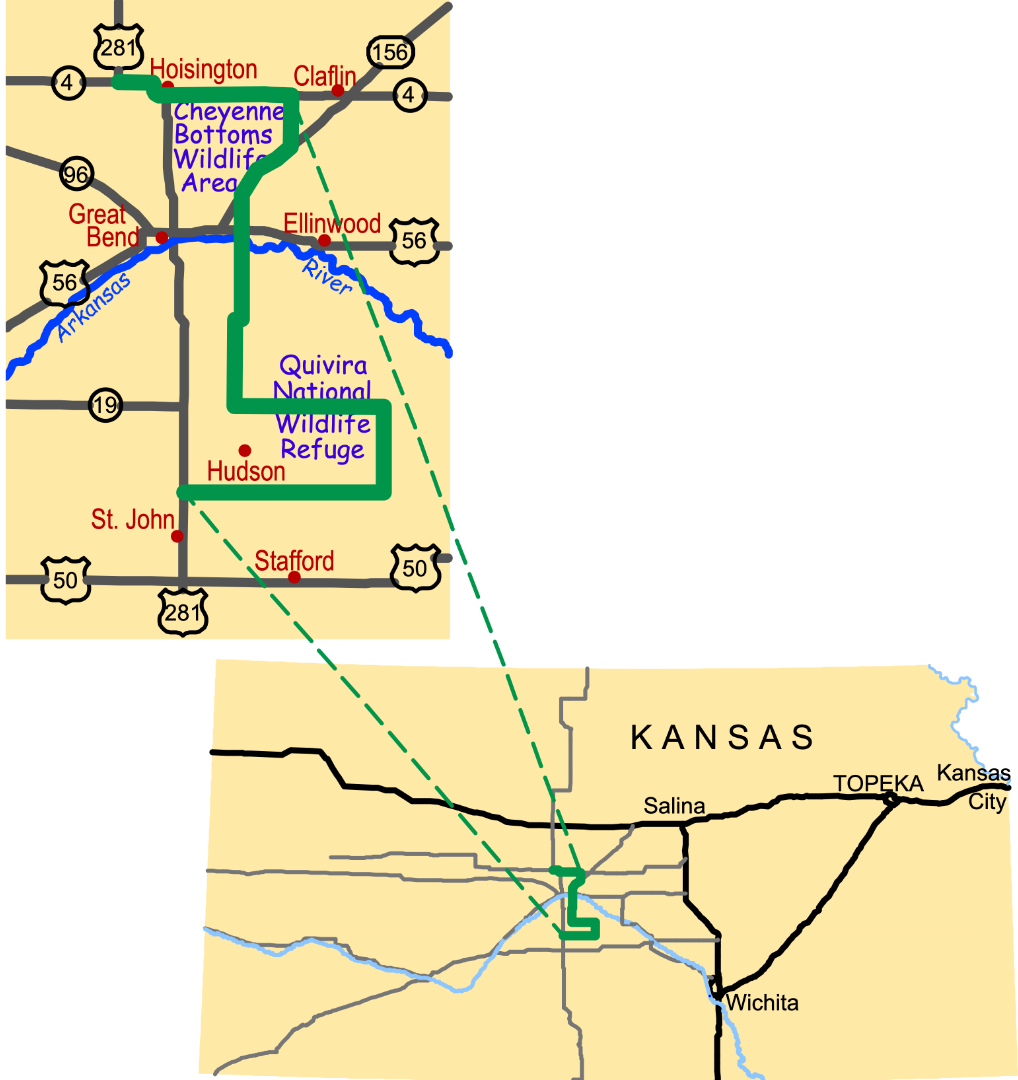Working...

Illusive Cities of Gold
Coronado's Search for Quivira
"The province of Quivira is 950 leagues from Mexico. ... The country itself is the best I have ever seen for producing all the products of Spain, for besides the land itself being ...well watered by the rivulets and springs and rivers, I found prunes like those of Spain, and nuts, and very good sweet grapes and mulberries. ..."
-Francisco Vasquez de Coronado, in a letter to the King of Spain, 1541
Golden cities in Kansas? That's what Francisco Vasquez de Coronado sought in 1541, eighty years before the Pilgrims ventured to the New World. Spurred on by stories of North America's Seven Golden Cities of Cibola, where they would find "trees hung with golden bells and people whose pots and pans were beaten gold," Coronado led an expedition from New Spain (Mexico). Coming up empty-handed in Texas and New Mexico, he continued north, where he hoped to find the mythic golden city of Quivira.
Here in central Kansas, he reached his destination, though not his heart's desire. He found no gold, only fertile land and the thatched villages of the nomadic Wichita tribe, which he named "Quivira." Coronado stayed among the Wichita people for 25 days, then returned south, disillusioned and bankrupt.
Myth Meets Reality
Expecting a city filled with gold, Coronado found only scattered iron pyrites and copper in central Kansas. Looking for Quivira's fabled multi-storied stone houses, he found the Wichita Indians' one-story, straw-roofed round houses. Though he disparaged the Wichita people* as "savage," he also praised them as "the best of hunters."
Motion and Change
Coronado brought the first cattle to Texas. Some escaped to the wilds, and over generations, these cattle developed into the longhorn, the only breed to evolve without human management. After the Civil War, cowboys drove millions of longhorns from Texas to Kansas rail yards, including Great Bend, for shipment east.
Download the interpretive panel: Illusive Cities of Gold Panel located at the Quivira Scenic Overlook on NE 140th St.
To listen to more information click on the Audio Tour
Go to the Gallery to view photographs contributed by visitors to the Byway.
* Wichita people
By excavating several sites in central Kansas, archeologists estimate that the Wichita tribe began to live in the Byway region in approximately 1050 AD. Both men and women in the Wichita tribe bore elaborate tattoos on their faces and bodies. They made their houses of forked cedar poles covered by dried grasses and spoke a dialect of the Caddoan Indian language. Francisco Vasquez de Coronado was the first white man to make recorded observations of the Wichita people. Of the Wichita, he wrote,
They have no clothes, nor cotton to make them of; they simply tan the hides of the cows which they hunt, and which pasture around their village and in the neighborhood of a large river. They eat their meat raw like the Querechos [the Apache] and Tejas [the Jumano], and are enemies to one another and war among one another. ...The inhabitants of Quivira are the best of hunters and they plant maize."
More Movement pages...
People of the Plains
Wild West Superhighway
The Settlers



